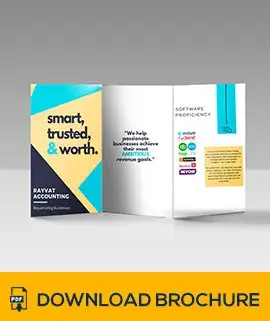What Does Accounts Payable Mean in QuickBooks? Your Comprehensive Guide
 Understanding the concept of accounts payable in QuickBooks is crucial for effective financial management. QuickBooks, a widely used accounting software, streamlines the process of managing your business finances. In this guide, we will delve into the meaning of accounts payable within the QuickBooks ecosystem, providing step-by-step insights to enhance your comprehension.
Understanding the concept of accounts payable in QuickBooks is crucial for effective financial management. QuickBooks, a widely used accounting software, streamlines the process of managing your business finances. In this guide, we will delve into the meaning of accounts payable within the QuickBooks ecosystem, providing step-by-step insights to enhance your comprehension.Step 1: Definition of Accounts Payable
Accounts payable, in the context of QuickBooks, refers to the outstanding bills and invoices that a company owes to its vendors or suppliers. These can include expenses for goods or services received that are yet to be paid.
Step 2: Recording Accounts Payable in QuickBooks
-
Accessing the Dashboard: Begin by logging into your QuickBooks account and navigating to the dashboard.
-
Selecting the "+ New" Option: Click on the "+ New" button to initiate a new transaction.
-
Choosing "Bill" or "Expense": Depending on the nature of the payment, select either "Bill" or "Expense" to record the accounts payable.
-
Entering Vendor Details: Input the vendor details, including name, address, and contact information.
-
Itemizing Expenses: Break down the expenses by itemizing each product or service received from the vendor.
-
Assigning Due Dates: Specify the due date for payment to ensure timely settlement.
-
Save and Close: After verifying the information, save and close the transaction to record the accounts payable in QuickBooks.
Step 3: Managing Accounts Payable
-
Monitoring Aging Reports: Regularly review aging reports to track outstanding bills and manage payment timelines.
-
Scheduling Payments: Utilize QuickBooks features to schedule payments, helping you stay organized and avoid late fees.
-
Reconciling Accounts: Reconcile your accounts regularly to ensure accurate financial records.
Step 4: Benefits of Managing Accounts Payable in QuickBooks
-
Enhanced Efficiency: QuickBooks automates the accounts payable process, saving time and reducing manual errors.
-
Improved Cash Flow Management: By efficiently managing accounts payable, businesses can optimize cash flow and maintain healthy financial stability.
-
Avoiding Late Payments: Timely recording and monitoring of accounts payable in QuickBooks help avoid late payments and associated penalties.
In conclusion, understanding and effectively managing accounts payable in QuickBooks is fundamental for maintaining financial health and facilitating smooth business operations. By following these step-by-step guidelines, you can navigate the accounts payable process with ease, ensuring accuracy and efficiency in your financial management endeavors.
Ready to streamline your finances and take control of your business? Contact us today. Our team of QuickBooks experts lets us handle your bookkeeping and accounting needs with precision and expertise. Don't wait; take the first step towards financial clarity and success—reach out to us now!

